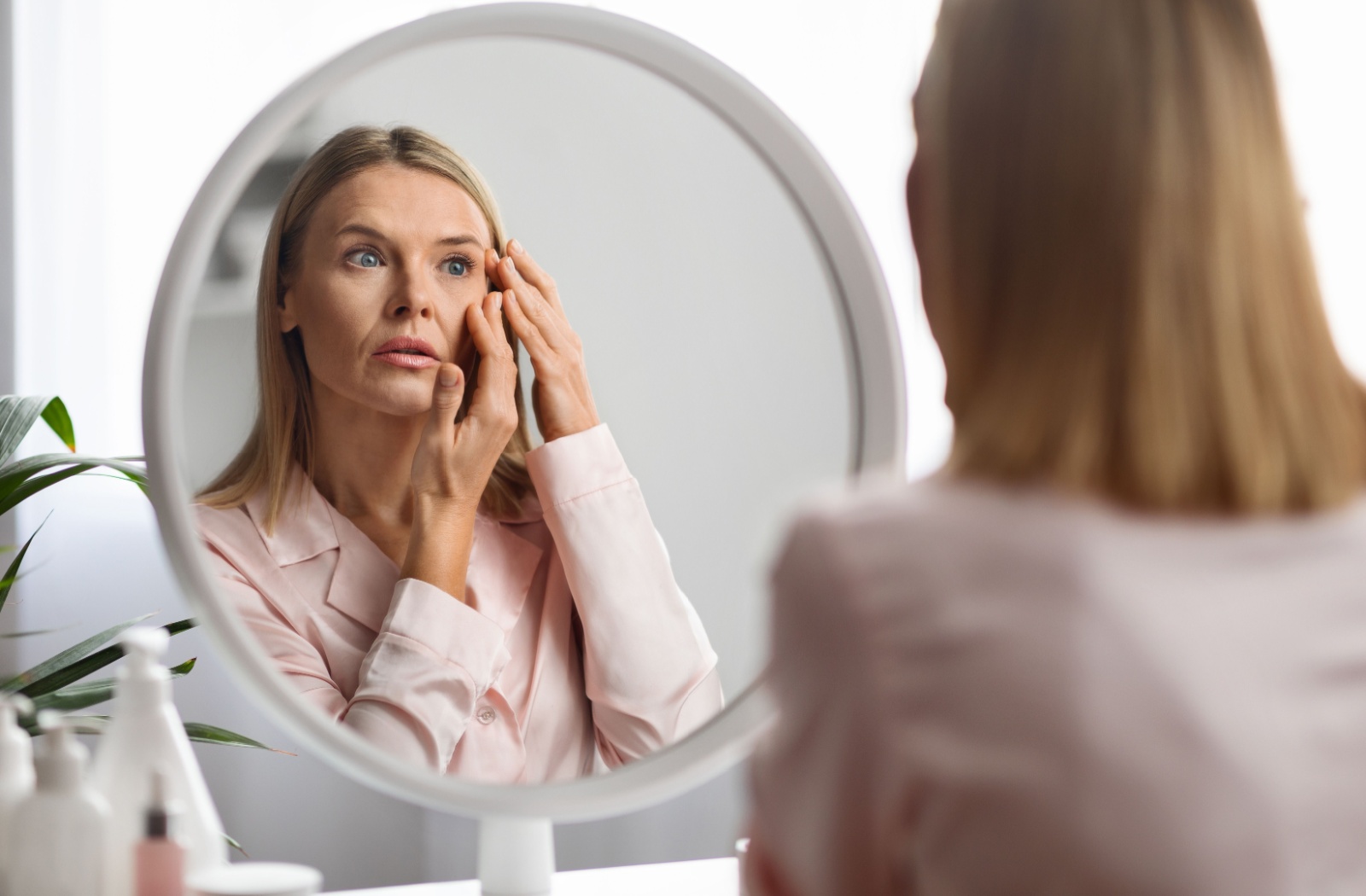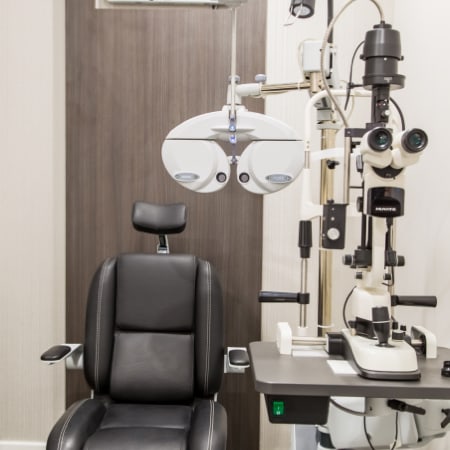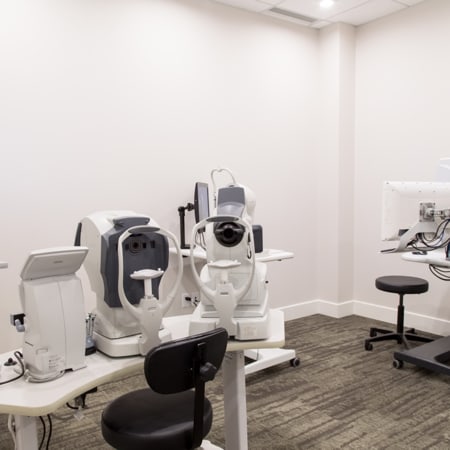have to endure it. Dry skin can be uncomfortable, especially in sensitive areas around the eyes, where the skin is thinner and more delicate.
Dry skin around the eyes is often caused by factors like aging, weather, eczema, and irritation from allergens. To manage it, use gentle, hydrating products, avoid triggers, and seek professional advice if needed.
With a thorough examination, our team at Forest City Optometry can help you determine if your dry skin is linked to an eye condition or another underlying issue. Recognizing the causes of dryness is the first step toward finding relief, so let’s dive in.
Causes of Dry Skin Around the Eyes
1. Aging
As we age, our skin naturally loses elasticity and the ability to produce oils, leading to dryness—particularly around the eyes. This delicate area is often one of the first to show signs of aging, with fine lines and wrinkles becoming more pronounced.
To combat this, consider using a gentle, hydrating eye cream enriched with fatty acids, humectants, and antioxidants. Look for key ingredients like glycerin, ceramides, hyaluronic acid, and vitamin C. These components work synergistically to replenish moisture, support skin structure, and give your eyes a youthful glow. Remember, it’s never too late to invest in your skin.
2. Weather
Cold temperatures, biting winds, and low humidity can strip your skin of its natural moisture, leading to discomfort and irritation. Eye cream can help when your skin is particularly vulnerable in the winter.
Look for formulas that lock in moisture and create a shield against harsh elements. Additionally, be mindful of indoor heating, which can exacerbate dryness. If you want to take it further, consider using a humidifier in your home.
3. Eczema
Eczema-affected skin may become itchy, scaly, crusted, or even hardened, causing discomfort that can impact daily life. While there’s no cure for eczema, with the proper care, you can regain comfort and confidence in your skin.
Use emollients that lock in moisture, and consider incorporating mild topical steroids under the guidance of a healthcare professional. Identifying and avoiding triggers—like certain fabrics or environmental allergens—can also significantly improve your symptoms.
4. Contact Dermatitis
When your skin comes into contact with allergens or irritants, it can cause an allergic reaction known as contact dermatitis. When your eyelids are exposed to irritants, they may become red, scaly, and swollen. This discomfort could interfere with your regular activities.
Preservatives, colours, and fragrances—frequently included in skincare and cosmetics—are common allergens. To mitigate this issue, choose hypoallergenic products free from these harmful ingredients. Antihistamines can help relieve symptoms, while topical corticosteroids may reduce inflammation.
If you notice persistent irritation, don’t hesitate to consult with your healthcare provider. Your skin deserves careful attention, and addressing contact dermatitis can make a world of difference in your comfort.
5. Conjunctivitis
Also known as pink eye, conjunctivitis can cause inflammation and irritation of the eye’s conjunctiva, affecting your eyes and the surrounding skin. Symptoms include redness, swelling, and discharge, all of which can lead to dry, flaky skin around your eyes.
Proper diagnosis and treatment from your eye care professional are crucial. They may prescribe medicated eye drops or ointments tailored to your specific condition. In the meantime, practicing good hygiene—such as washing your hands frequently and avoiding touching your eyes—can prevent further irritation.
Remember to avoid sharing makeup or skincare products to keep your skin healthy. With the right care, you can alleviate symptoms and promote healing.
Recognizing Symptoms of Dry Skin Around the Eyes
Dry skin can manifest in various ways, and awareness of these symptoms can help you seek timely treatment. Common indicators include:
• Tightness or discomfort
• Redness or inflammation
• Rough, flaky, or peeling skin
• Itching, stinging, or burning sensations
• Increased visibility of fine lines
More severe symptoms can include deep cracks, skin infections, swelling, or pain. If you notice these symptoms, it’s important to take action. Addressing dry skin around the eyes is not just about comfort. It’s about maintaining your overall eye health and preventing further complications. With the right care, you can enhance your skin’s resilience and keep irritation at bay.
Visit Forest City Optometry & Take Action Today
Our team at Forest City Optometry can provide personalized recommendations and treatments to help you achieve lasting comfort. Our goal is to get to the root cause of your dry skin and create a treatment plan to help you find relief, allowing you to enjoy life without the burden of discomfort.
Don’t let dryness hold you back from feeling your best! Contact us today to schedule your appointment and take the first step toward healthier eyes and skin. Your comfort and well-being are our top priorities, and we look forward to partnering with you on your journey.















